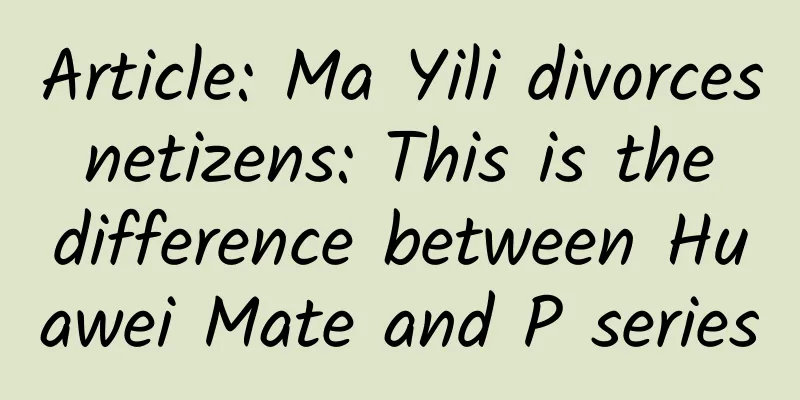Are invasive alien species necessarily villains?

|
Produced by: Science Popularization China Author: Chen Junxian Producer: China Science Expo On the Earth where humans live, there are millions of creatures coexisting with us, each of which is carrying out its own wonderful life journey. When we were young, when we received information from the outside world, we often used the simplest "good" or "bad" to identify things. Among them, invasive species are frequently labeled as "bad" and are well known to people. So, what are invasive species? Why are they so alarming? Let us unveil their mysterious veil today! Beware of biological invasions (Image source: Conservation Corridor) 1. Why do biological invasions occur? Invasive species generally refer to alien species that survive, reproduce and successfully establish self-sustaining populations outside their native habitats, posing a threat to local biology, ecosystems, economy and security. However, not all alien species are invasive. The reasons why a species drifts from its native place to the "new world" vary. There are mainly three situations: (1) Natural introduction. Some of them land through air, water flow, or the movement of fish, insects, birds, and animals. (2) Unintentional introduction. They spread along the trajectory of human activities and transportation. (3) Intentional introduction. They are introduced into the local area by humans with the initial purpose of improving the local ecological ornamental value or economic benefits. 2. What are the adaptive strategies to biological invasions? Just like humans need to adjust and adapt to a new environment, alien species also need to accept the local survival test. During this period, the successful invasion of alien species needs to go through five stages: introduction, colonization, latent, spread, and outbreak. During the invasion process, in order to cope with the living environment, their adaptation strategies are also gradually upgraded and transformed, mainly divided into the following aspects: Ecological adaptation. The life history strategy of an organism is an important manifestation of its interaction with the environment during the evolutionary process. When an invasive species arrives at an invaded area, it will face the selection of the natural environment and will maximize its adaptation optimization from individuals to populations. In the process of adaptive evolution, the life history of the invasive species changes, which may be reflected in its body size, growth, behavior, reproduction, lifespan, and resource utilization. The differences in the life history of invasive species and native species also reveal the advantages and disadvantages of the biological adaptation strategy. Rapid evolution. After invading a new ecological environment, invasive species often show better adaptability than in their native habitats due to factors such as lack of natural enemies, suitable climate, and less competition. Therefore, they can grow rapidly, shorten the development cycle of their reproductive system including sexual organs, and have a higher degree of adaptability to the environment. The number of invasive populations can increase significantly and maintain a certain population stability. Interspecific interactions. The rich biodiversity of the invaded area provides a guarantee for the successful invasion of invasive species. Interactions between species can better help invasive species adapt to the new environment and improve the conversion rate and utilization rate of resources. The pine wood nematode Bursaphelenchus xylophilus, which has wreaked havoc in North America and has spread to many countries in Asia and Europe, has a very mature invasion strategy. In my country, the pine wood nematode has found the pine beetle Monochamus alternatus as its "best partner" - the vector insect. After the pine wood nematode parasitizing on the pine tree enters the beetle's respiratory system, the beetle's tracheal flora changes, and the compatibility between the nematode and the beetle is higher. Then the nematode waits for the beetle to fly to other pine trees to feed or lay eggs before entering the new host. At the same time, it secretes enzymes to resist the terpene defense substances of the pine tree itself for a new round of invasion. Pine Monochamus alternatus larvae (Photo source: veer Gallery) Animation of pine wood nematodes (Source: Video "In order to catch the "murderer" of pine tree dieback, this longhorn beetle was seriously injured by mistake") This includes interactions between animals, plants, and microorganisms, which make the growth, development, and reproduction of invasive species more efficient and increase the plasticity of invasive species in the invaded areas. Genetic structure. After entering the invaded area, the invasive species makes the genetic information it carries more diverse in the process of adaptation and evolution, and genetic variation occurs, which greatly increases the abundance of its genetic material. After natural selection in the invaded area, the surviving parents stably pass on the high-quality traits they acquired after mutation to their offspring, making the genetic structure of the invasive species different from that of the original population. Phenotypic plasticity. As invasive species evolve in the invaded areas, the total amount of genetic information contained in the genome increases. The same genotype of the invasive species may produce different phenotypes in morphology or physiology in different environments, and has a certain independent genetic basis. While increasing the possibility of invasive species to utilize potential environmental resources, it also alleviates the selection pressure they are subject to in the new environment, and to a certain extent expands the ecological range of invasive organisms and enhances their invasive power. Therefore, after going through many tests, the survival adaptability of invasive organisms has been greatly improved, and they have strong ecological adaptability, strong phenotypic plasticity, strong reproduction and diffusion ability, significant functional microbial community utilization ability and strong intra-species or inter-species hybridization ability. Invading organisms gradually seize ecological niche resources in the invaded areas through a variety of adaptive evolutionary strategies, thereby expanding their population and achieving successful invasion. 3. How to prevent and control invasive species? We may often hear about the control strategy of "introducing natural enemies". There is no doubt that this is a relatively effective biological control measure, but it should be noted that before introducing biological species, risk identification and potential risk assessment should be carried out in advance to prevent the introduction of natural enemies from triggering a new round of invasion storms. During the introduction process, strictly abide by and implement the "Guidelines for the Management of Introduced Natural Enemies and Biological Control Agents" confirmed and implemented by my country. At present, my country has a number of successful cases of introducing natural enemies to control invasive species. From the initial introduction of Australian ladybug Rodolia cardinalis to control cotton blower scale Icerya purchasi, to the later introduction of coconut leaf beetle Tetrastichus brontispae and coconut leaf beetle Asecodes hispinarum to control coconut leaf beetle Brontispa longissima, the introduction of natural enemies has controlled the infestation of invasive species to a certain extent. However, biological control alone cannot control or reduce invasive organisms at the source, so the prevention and control of invasive organisms requires systematic prevention and control from the aspects of blocking, suppressing and preventing re-introduction. This includes port quarantine, regional eradication, continuous prevention and control, and dynamic epidemic detection. Out of the emphasis on national biological, ecological and food security, on August 1, 2022, my country's first management method for the prevention and control of alien species, the "Alien Invasive Species Management Method", was officially implemented. It is clearly stated that it is necessary to strengthen relevant education and popularization for the public and guide the whole people to participate in legal prevention and control actions. It can be seen that it is extremely important for us to learn to identify invasive organisms and report to local agricultural, forestry or quarantine departments in a timely manner after discovery. This can not only provide professionals with an accurate source of information, but also facilitate them to take corresponding measures to deal with them in a timely and effective manner. 4. How to avert the danger of biological invasion? Over the years, the negative effects of biological invasions have been widely reported, mainly threatening or destroying the biodiversity of native lands, causing the degradation or collapse of native ecosystems, and directly or indirectly causing environmental and economic losses. However, this is only a conclusion drawn from the perspective of human interests. Species develop into communities in the process of continuous evolution, and gradually co-evolve with other communities, finally forming a diverse ecosystem. Image source: veer gallery Then, the formation of an ecosystem is inevitably accompanied by the pressure of natural selection. Species that are eliminated in the establishment of this ecosystem may be retained and used in other ecosystems. Apart from the more extreme predatory invasion, the imbalance in the distribution of resources in the original ecosystem will also cause the ecosystem to degenerate or collapse. Just as system upgrades require patches to fill loopholes, invasive species also have a positive effect on improving ecosystem functions and protecting biodiversity. This is mainly reflected in the following aspects: As food, feed or other commodities that can provide economic value. For example, Alternanthera philoxeroides was once rampant in my country, but has now been developed into feed for fish, horses, cattle and other animals, and can also be used as medicine. Crayfish Procambarus clarkii has transformed from an invasive species to an important delicacy in Chinese food culture. Invasive species can sometimes become a new type of economy and create value after reasonable prevention and control. "Midnight Snack Soul" Crayfish Photo Source: Veer Gallery Repair or stabilize the ecological environment system. On the Hawaiian island of Ahu, some non-native birds can replace local extinct birds to spread the smaller seeds on the island because of their small beaks. The troublesome Canadian goldenrod Solidago canadensis L., because of its developed root system and strong ability to absorb water and nutrients, can be used as an important protective plant to prevent wind and sand and slow down soil erosion in certain areas. Canada flower photo source: veer gallery Adjust and optimize the environment. The impact mechanisms of invasive species on native biodiversity are complex and diverse. In addition to competing with native species, they may also bring new microenvironments. The invasion of Mikania micrantha led to an increase in the biomass of surrounding microorganisms, which promoted the respiration and carbon source utilization of microorganisms, reduced the output of CO2, and was also beneficial to the growth of Mikania micrantha itself. After the invasion of alien species, the new biodiversity pattern formed plays an important regulatory role in climate regulation, dust filtration and other aspects of the environment. Image source of the white flowers of Mikania micrantha: veer gallery Forming a cultural industry chain with leisure service value. Lupinus micranthus was originally introduced to Iceland as a greening plant to protect Iceland's fragile vegetation and soil. However, due to its strong vitality and rapid reproduction, it subsequently grew and spread in Iceland and became an invasive species. Fortunately, lupinus is mainly concentrated in the wilderness area in northern Iceland, and the overall impact is not great. At present, lupinus has become an important tourism industry in Iceland in summer due to its excellent ornamental value, attracting a large number of tourists to visit. Lupine growing in the wild. Image source: veer photo gallery From the perspective of humans, invasive species do pose a great ecological risk, but as far as the entire biological world is concerned, invasive species are neutral. It is necessary to study the theory and model of species coexistence, which can facilitate the disclosure of the interaction between invasive species and native species. Ecological feedback is dynamic, and the competition or coexistence relationship between invasive species and native species still requires long-term monitoring and evaluation. In the complex biological context, we need to actively respond to the series of problems brought about by biological invasions and coordinate the relationship between economic development and biological invasions in order to achieve sustainable development of the ecosystem. |
<<: Is the sun responsible for the heat wave on Earth?
>>: Can eating more "blue foods" such as seafood solve the human food crisis?
Recommend
Does it really not matter whether Google Glass wins or loses?
It is undeniable that there have been many debate...
8 things independent developers should know before entering the industry
[[153964]] About five months ago, I decided to qu...
International Vegetarian Day丨Is it good to be a long-term vegetarian? Eating this way will make you healthier!
Some people believe that being a vegetarian can h...
Comparison of the five major smartphone systems to see which one is stronger
Smartphones are mobile phones with more powerful ...
Online education traffic conversion strategy!
In the field of online education , the acquisitio...
How much does it cost to develop a teaching material mini program in Xishuangbanna?
How much does it cost to develop a textbook apple...
Would you like to know the 10 tips for Weibo operation and promotion?
Would you like to know about the ten tips for Wei...
Will Baidu's promotion budget hit the limit and affect the quality?
(1). Strictly speaking, there is no impact. When ...
10 ways for new users to increase their followers on Bilibili, how to increase your followers quickly
With the rapid development of Bilibili, both ente...
360 Search Festival Brand Sponsorship, CPT Advertising Promotion Introduction!
360 Festival Brand Sponsorship Introduction to th...
Mobile phones are so far ahead, it turns out that satellites are the scapegoat
Comes with satellite phone! Ahead of the curve! T...
The first batch of mass-produced models equipped with Doubao large models, smart Elf 5 is about to be released
Today, the new luxury intelligent pure electric c...
How much does it cost to customize the Yancheng rain gear app? Yancheng rain gear applet customization price inquiry
WeChat Mini Program is an application that users ...
5 major application trends that mobile game developers need to pay attention to
He likes to write about technology, marketing and...
The "Fujian" is here! my country's third aircraft carrier is launched and named (with on-site video)
The launching and naming ceremony of my country&#...









